Grow baby carrots at home? Absolutely! Imagine plucking perfectly petite, sweet baby carrots straight from your own backyard – it’s easier than you think, and incredibly rewarding. Forget those bland, store-bought carrots; we’re talking about vibrant, flavorful goodness you nurtured yourself.
For centuries, home gardening has been a cornerstone of self-sufficiency and a connection to the earth. From ancient civilizations cultivating small plots to modern-day urban gardeners, the desire to grow our own food remains strong. And while carrots might seem like a simple vegetable, their history is surprisingly rich, with early varieties coming in shades of purple, white, and yellow!
But why should you bother learning to grow baby carrots at home? Well, for starters, you control the quality. No pesticides, no questionable fertilizers – just pure, organic goodness. Plus, baby carrots are incredibly versatile in the kitchen, perfect for snacking, salads, or adding a touch of sweetness to your favorite dishes. And let’s be honest, there’s a certain satisfaction that comes from harvesting something you’ve grown with your own two hands. So, if you’re ready to ditch the grocery store carrots and embark on a fun, fulfilling gardening adventure, keep reading! I’m going to share some simple DIY tricks and hacks that will have you harvesting a bumper crop of baby carrots in no time.
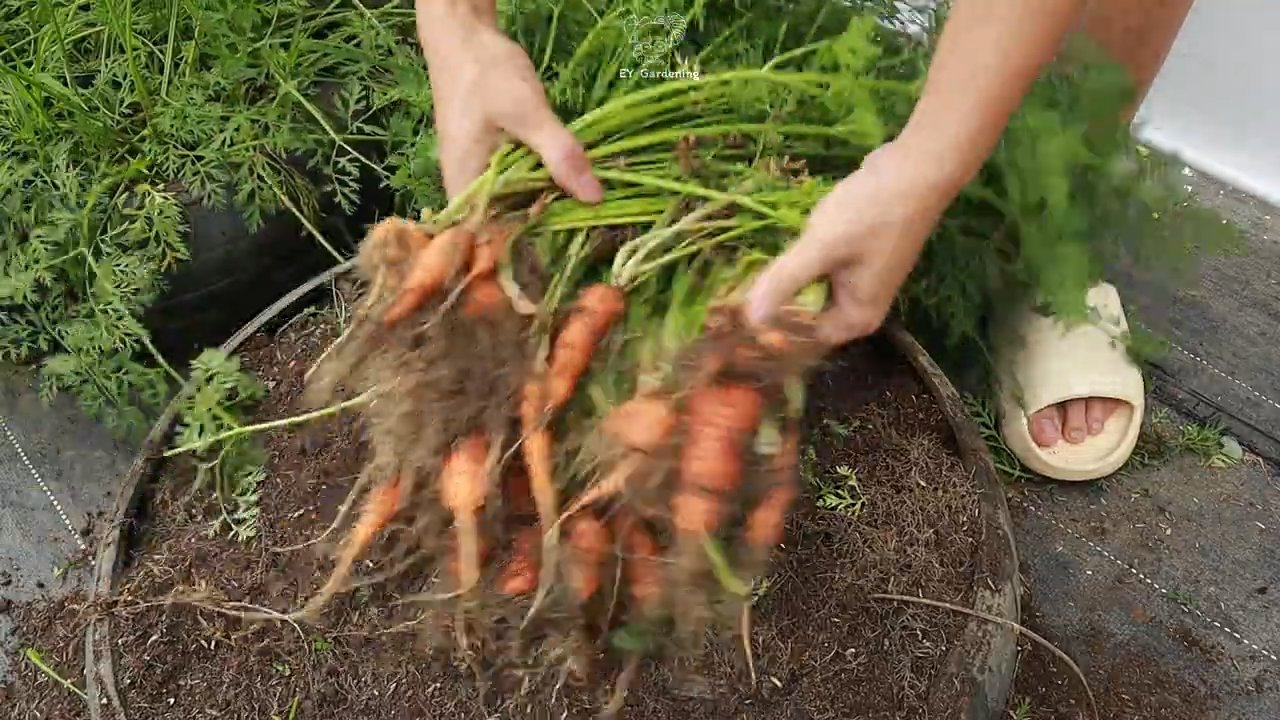
Grow Your Own Sweet and Crunchy Baby Carrots: A DIY Guide
Hey there, fellow gardening enthusiasts! Ever dreamt of plucking perfectly petite, sweet baby carrots straight from your own backyard? Well, dream no more! Growing your own baby carrots is surprisingly easy and incredibly rewarding. Forget those bland, store-bought bags – homegrown baby carrots are bursting with flavor and packed with nutrients. I’m going to walk you through everything you need to know to cultivate your own miniature carrot patch.
What You’ll Need: The Essential Supplies
Before we get our hands dirty, let’s gather the necessary supplies. This will make the whole process smoother and more enjoyable.
* Carrot Seeds: Choose a variety specifically suited for baby carrots. Nantes and Parisian are excellent choices. Nantes are known for their cylindrical shape and sweet flavor, while Parisian carrots are round and adorable.
* Container or Raised Bed: Baby carrots don’t need a ton of space, so a container at least 6-8 inches deep or a small raised bed will work perfectly.
* Potting Mix: Use a high-quality, well-draining potting mix. Avoid garden soil, as it can be too heavy and compacted for delicate baby carrots.
* Watering Can or Hose with a Gentle Spray Nozzle: Baby carrots need consistent moisture, but avoid blasting them with a strong stream of water.
* Fertilizer (Optional): A balanced, slow-release fertilizer can give your baby carrots a boost, but it’s not strictly necessary.
* Sunlight: Baby carrots need at least 6 hours of sunlight per day.
* Thinning Shears or Small Scissors: These will be essential for thinning out your seedlings.
* Gloves (Optional): If you prefer to keep your hands clean, grab a pair of gardening gloves.
Getting Started: Preparing Your Growing Space
The key to successful baby carrot cultivation lies in proper preparation. Let’s get our growing space ready for those tiny seeds!
1. Choose Your Location: Select a spot that receives at least 6 hours of direct sunlight each day. If you’re using a container, make sure it’s easily movable so you can adjust its position as needed.
2. Prepare Your Container or Raised Bed: If you’re using a container, ensure it has drainage holes to prevent waterlogging. For a raised bed, clear the area of any weeds or debris.
3. Fill with Potting Mix: Fill your container or raised bed with the high-quality potting mix. Gently level the surface.
4. Moisten the Soil: Lightly water the potting mix until it’s evenly moist, but not soggy.
Planting the Seeds: The Delicate Art of Sowing
Now for the fun part – planting the seeds! Baby carrot seeds are tiny, so precision is key.
1. Sow the Seeds: Sprinkle the carrot seeds thinly and evenly over the surface of the prepared soil. Aim for about 1/4 inch spacing between seeds. Don’t worry about being perfect; we’ll thin them out later.
2. Cover the Seeds: Lightly cover the seeds with a thin layer (about 1/4 inch) of potting mix.
3. Gently Water: Use a watering can or hose with a gentle spray nozzle to water the seeds. Be careful not to dislodge them.
4. Keep Moist: Keep the soil consistently moist until the seeds germinate. This may require watering daily, especially in warm weather.
Nurturing Your Seedlings: Watering, Thinning, and Weeding
Once your seedlings emerge, it’s crucial to provide them with the care they need to thrive.
1. Watering: Water regularly, keeping the soil consistently moist but not waterlogged. Check the soil moisture daily and water when the top inch feels dry.
2. Thinning: This is arguably the most important step for growing baby carrots. When the seedlings are about 1-2 inches tall, thin them out to about 1-2 inches apart. Use thinning shears or small scissors to snip off the unwanted seedlings at the soil line. Don’t pull them out, as this can disturb the roots of the remaining plants.
3. Weeding: Keep your growing area free of weeds. Weeds compete with your baby carrots for nutrients and water. Gently hand-pull any weeds that appear.
4. Fertilizing (Optional): If you choose to fertilize, apply a balanced, slow-release fertilizer according to the package directions. Avoid over-fertilizing, as this can lead to leggy growth.
Harvesting Your Bounty: The Sweet Reward
After about 50-60 days, your baby carrots should be ready to harvest.
1. Check for Readiness: Gently loosen the soil around the carrots and pull one up to check its size. Baby carrots are typically harvested when they are about 3-4 inches long.
2. Harvest Carefully: Gently loosen the soil around the carrots and pull them up by the greens. Be careful not to break them.
3. Wash and Enjoy: Wash your freshly harvested baby carrots and enjoy them raw, roasted, or steamed.
Troubleshooting: Common Issues and Solutions
Even with the best care, you might encounter some challenges along the way. Here are some common issues and how to address them:
* Poor Germination: This could be due to several factors, including old seeds, dry soil, or cold temperatures. Ensure your seeds are fresh, keep the soil consistently moist, and provide adequate warmth.
* Leggy Growth: This is often caused by insufficient sunlight or over-fertilizing. Move your container to a sunnier location and avoid over-fertilizing.
* Forked Roots: This can be caused by compacted soil or rocks in the soil. Use a high-quality, well-draining potting mix and remove any rocks or debris.
* Pests: Carrot rust flies and aphids can sometimes attack baby carrots. Inspect your plants regularly and take action if you notice any pests. Insecticidal soap or neem oil can be effective treatments.
Extra Tips for Success:
* Succession Planting: Plant a new batch of seeds every few weeks to ensure a continuous harvest of baby carrots.
* Companion Planting: Plant your baby carrots alongside companion plants like rosemary, sage, or onions. These plants can help deter pests and improve the flavor of your carrots.
* Record Keeping: Keep a gardening journal to track your progress and learn from your experiences. Note the date you planted your seeds, the date they germinated, and any challenges you encountered.
Section: Choosing the Right Carrot Variety
Not all carrots are created equal, especially when it comes to growing baby carrots. Selecting the right variety is crucial for achieving those perfectly petite and flavorful results. Here’s a breakdown of some top contenders:
* Nantes Varieties: These are my go-to for baby carrots. They’re known for their cylindrical shape, smooth skin, and sweet, almost coreless flavor. ‘Nantes Half Long’ and ‘Scarlet Nantes’ are popular choices. They mature relatively quickly, making them ideal for baby carrot production.
* Parisian Varieties: If you’re looking for something truly unique, try Parisian carrots. These are round, almost like little radishes, and have a delicate, sweet flavor. They’re perfect for adding a touch of whimsy to your garden and your plate.
* ‘Thumbelina’: As the name suggests, ‘Thumbelina’ carrots are tiny and round, similar to Parisian carrots. They’re incredibly cute and perfect for snacking.
* ‘Little Finger’: This variety produces small, slender carrots that are about the size of your little finger. They’re sweet and tender, making them a great choice for baby carrots.
When choosing your carrot variety, consider your climate and growing conditions. Some varieties are better suited for certain regions than others. Read the seed packet carefully to ensure you’re selecting a variety that will thrive in your garden.
Section: Understanding Soil and Fertilization
The soil is the foundation of your baby carrot garden. Providing the right soil and nutrients is essential for healthy growth and delicious flavor.
* Soil Composition: Baby carrots need well-draining soil that is loose and free of rocks and debris. Heavy, compacted soil can lead to forked roots and stunted growth. A high-quality potting mix is ideal for container gardening. If you’re growing in a raised bed, amend your soil with compost or other organic matter to improve drainage and fertility.
* pH Level: Carrots prefer a slightly acidic soil pH of around 6.0 to 6.8. You can test your soil pH using a soil testing kit. If your soil is too alkaline, you can amend it with sulfur or peat moss.
* Fertilization: While baby carrots don’t require heavy fertilization, a little boost can help them thrive. A balanced, slow-release fertilizer is a good option. Look for a fertilizer with an NPK ratio of around 5-10-10. Avoid
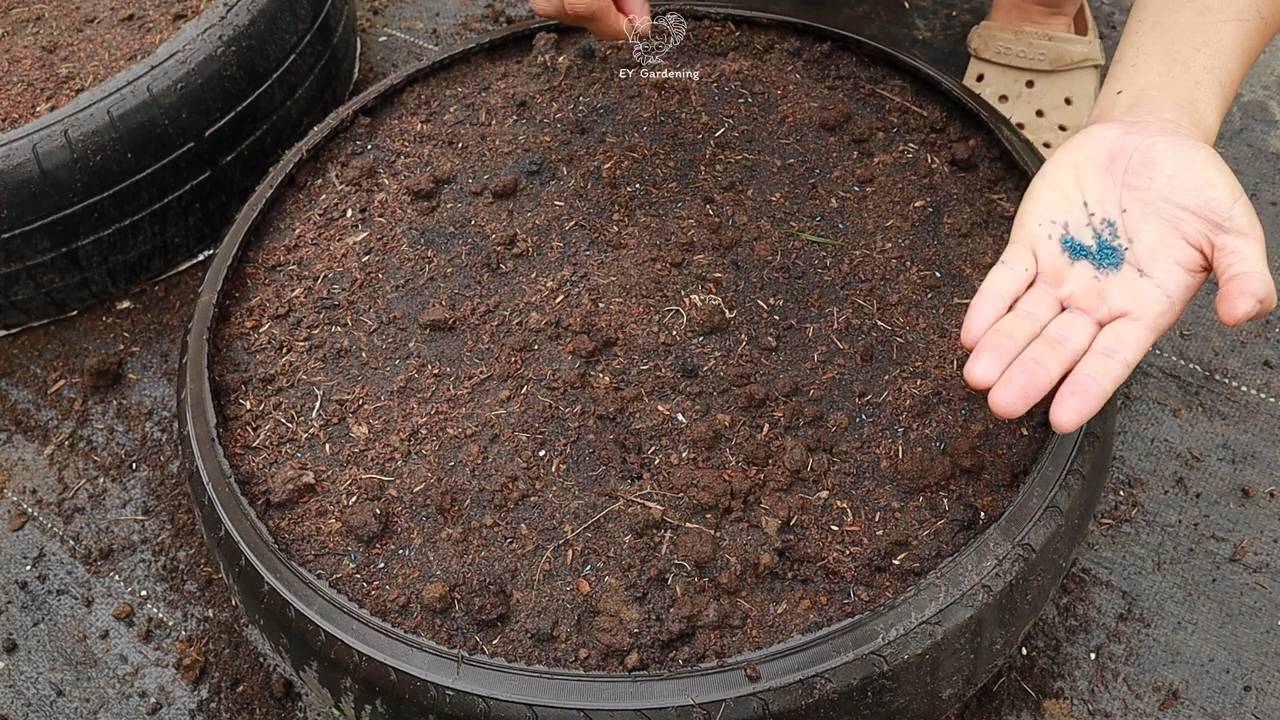
Conclusion
So, there you have it! Growing baby carrots at home is not only achievable but also a deeply rewarding experience. Forget the bland, pre-packaged carrots from the supermarket; imagine biting into a sweet, crisp baby carrot that you nurtured from seed to harvest. The difference in flavor and texture is truly remarkable. This DIY project is a must-try for several reasons.
First, it’s incredibly cost-effective. A packet of carrot seeds is significantly cheaper than buying pre-packaged baby carrots regularly. Second, you have complete control over the growing process. You can choose organic seeds, avoid harmful pesticides, and ensure your carrots are grown in nutrient-rich soil. This means you’re not only saving money but also providing your family with healthier, more nutritious vegetables. Third, it’s a fantastic learning experience, especially for children. It teaches them about the life cycle of plants, the importance of healthy eating, and the satisfaction of growing their own food.
But the benefits don’t stop there. Growing baby carrots at home allows you to experiment with different varieties. While Nantes and Chantenay carrots are popular choices for baby carrots due to their shorter, cylindrical shape, don’t be afraid to try other varieties like Parisian carrots, which are small and round, or even colorful carrots like purple or yellow varieties for a visually stunning and delicious harvest.
Consider these variations to personalize your baby carrot growing experience:
* Container Gardening: If you lack a garden plot, don’t worry! Baby carrots thrive in containers. Choose a pot that’s at least 12 inches deep and wide to allow for root development. Use a well-draining potting mix and ensure the container receives plenty of sunlight.
* Succession Planting: To enjoy a continuous harvest of baby carrots throughout the growing season, practice succession planting. Sow a new batch of seeds every two to three weeks. This ensures you always have a fresh supply of these delicious treats.
* Companion Planting: Enhance your carrot patch by planting companion plants like onions, garlic, or rosemary. These plants can help deter pests and improve the overall health of your carrot crop.
* Hydroponics: For the adventurous gardener, consider growing baby carrots hydroponically. This method involves growing plants without soil, using nutrient-rich water solutions. It can be a fun and efficient way to produce baby carrots indoors.
Growing your own baby carrots is more than just a gardening project; it’s a step towards a healthier, more sustainable lifestyle. It’s about connecting with nature, understanding where your food comes from, and enjoying the simple pleasures of homegrown produce.
So, what are you waiting for? Grab a packet of seeds, prepare your soil, and embark on this exciting gardening adventure. We’re confident that you’ll be amazed by the results. And most importantly, we want to hear about your experience! Share your tips, tricks, and photos with us in the comments below. Let’s create a community of baby carrot enthusiasts and inspire others to grow their own delicious treats. Let us know what variety of baby carrots you decided to grow at home. Happy gardening!
Frequently Asked Questions (FAQ)
What are the best carrot varieties for growing baby carrots?
The best carrot varieties for growing baby carrots are those that naturally produce shorter, smaller roots. Nantes and Chantenay varieties are excellent choices because they tend to be cylindrical and mature quickly. Parisian carrots, which are small and round, are another great option. Consider also ‘Thumbelina’ carrots, which are specifically bred to be small and round, perfect for baby carrots. Experimenting with different varieties can be fun, but these are generally the most reliable for achieving that classic baby carrot size and shape.
How much sunlight do baby carrots need?
Baby carrots need at least six hours of direct sunlight per day to thrive. Sunlight is crucial for photosynthesis, the process by which plants convert light energy into chemical energy for growth. If you’re growing carrots indoors or in a partially shaded area, consider supplementing with grow lights to ensure they receive adequate light. Insufficient sunlight can result in stunted growth, pale coloration, and a less sweet flavor.
What type of soil is best for growing baby carrots?
Baby carrots prefer loose, well-draining soil that is rich in organic matter. Heavy clay soil can hinder root development, resulting in misshapen or stunted carrots. Amend heavy soil with compost, aged manure, or other organic materials to improve drainage and aeration. A slightly acidic soil pH of 6.0 to 6.8 is ideal. Before planting, remove any rocks or debris from the soil to prevent the carrots from forking or splitting.
How often should I water my baby carrots?
Water baby carrots regularly, keeping the soil consistently moist but not waterlogged. Overwatering can lead to root rot, while underwatering can cause the carrots to become dry and tough. Water deeply whenever the top inch of soil feels dry to the touch. During hot, dry weather, you may need to water more frequently. Mulching around the plants can help retain moisture and suppress weeds.
How long does it take to grow baby carrots?
Baby carrots typically take 50 to 70 days to mature, depending on the variety and growing conditions. Check the seed packet for specific maturity dates. You can begin harvesting baby carrots when they reach the desired size, usually around 3 to 4 inches long. Gently loosen the soil around the carrots and pull them up by the greens.
What are some common pests and diseases that affect baby carrots?
Common pests that affect baby carrots include carrot rust flies, aphids, and nematodes. Carrot rust flies lay their eggs near the base of the plants, and the larvae tunnel into the roots, causing damage. Aphids suck sap from the leaves, weakening the plants. Nematodes are microscopic worms that can damage the roots. To prevent pest problems, practice crop rotation, use row covers, and introduce beneficial insects like ladybugs. Diseases that can affect baby carrots include leaf blight and root rot. Ensure good air circulation and avoid overwatering to prevent these diseases.
Can I grow baby carrots in containers?
Yes, you can absolutely grow baby carrots in containers. Choose a container that is at least 12 inches deep and wide to allow for adequate root development. Use a well-draining potting mix and ensure the container receives plenty of sunlight. Water regularly and fertilize with a balanced fertilizer every few weeks. Container gardening is a great option for those with limited space or poor soil conditions.
How do I prevent my baby carrots from forking or splitting?
Forking or splitting in baby carrots is often caused by rocky or compacted soil. Remove any rocks or debris from the soil before planting and amend heavy soil with compost or other organic materials to improve drainage and aeration. Avoid overwatering, as this can also contribute to splitting. Ensure the soil is consistently moist but not waterlogged.
When is the best time to plant baby carrots?
The best time to plant baby carrots is in early spring or late summer. Carrots prefer cool weather and can tolerate light frosts. In warmer climates, you can plant carrots in the fall for a winter harvest. Avoid planting during the hottest months of the year, as high temperatures can inhibit germination and growth.
How do I thin baby carrot seedlings?
Thinning baby carrot seedlings is essential to prevent overcrowding and ensure proper root development. When the seedlings are about 1 inch tall, thin them to 1 to 2 inches apart. Gently pull out the excess seedlings, being careful not to disturb the roots of the remaining plants. Thinning allows the carrots to have enough space to grow to their full potential.

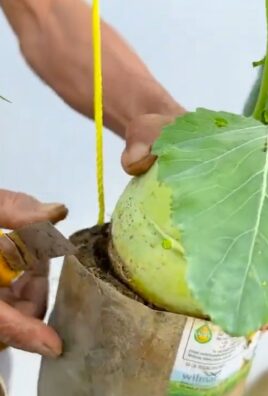
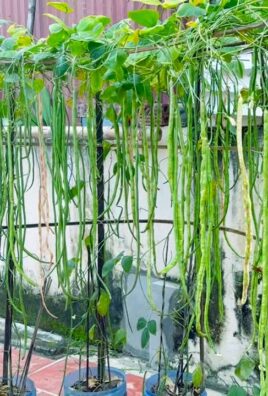
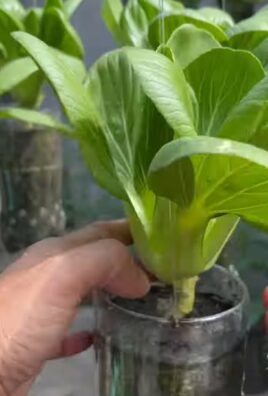
Leave a Comment